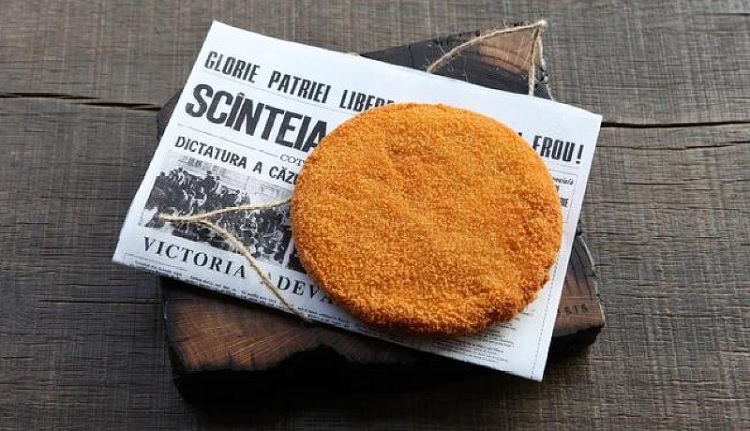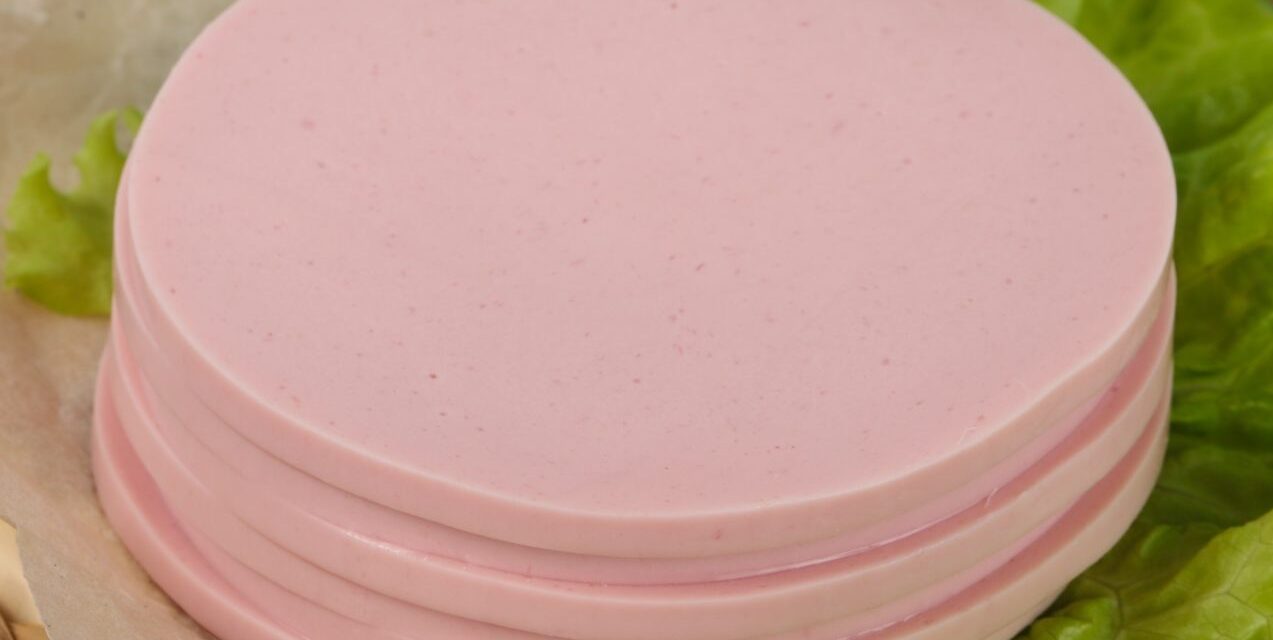When the magic word, PARIZER, is uttered, foggy mornings, lines winding around the corner, soja and other Iron Curtain memories come to mind for a person who understood that era. Well, more than 30 years have passed. And the Parisian climbed up on the high shelf.
It started quite innocently. I read the daily press. And all of a sudden I see that in the title of an article on one of the local Romanian sites, the author asks: how much do ten dekas of tepertő (food for the poor) cost in the central market of Cluj? I looked at the article with the wrong idea. I had a bad guess because I had previously walked around that particular craft fair in mid-October, and I fell backwards when I saw that a kilo of cheese was 120 lei. Sure, I'm sure there are more expensive cheeses. And I also know that in the winter, for example, the rental fee for a booth on the main floor was 5,000 lei, as well as electricity, travel expenses, etc. So I don't want to hurt the producers, they have enough problems. But 120 lei (approx. HUF 9,000) for a kilo of cheese? I left the fair in a huff.

Source: Main Square
And then this article came along. Of course, I looked up how much that sleazy creeper costs.
But I immediately forgot as soon as I saw how much a kilo is... Parisian.
Instant amnesia fell upon me like a piano from the fourth.
Well then, let's stop here for a bit. Gastronomic symbols are attached to different peoples and eras in the same way as flags, anthems or styles and fashions. We are all familiar with these meals, if for no other reason than in connection with what János Arany brilliantly formulated at the time when he portrayed the Speech of Mihály Vörösmarty (with the best of intentions, of course): Be an unwavering believer in Hasad, O Hungarian! When it comes to Hungarian cuisine, most people immediately think of the symbol called goulash, while Romanian cuisine comes to mind with puliszka and mics. Caviar and champagne stand out among the stomach foods most often associated with the bourgeoisie.
And what can we associate with the hammer and sickle history of the recent past? I mean the domestic communist regime, of course. Of course, the Parisian (or Parisian). Anyone who lived through the communist dictatorship - even as a child - will immediately smell the (not always pleasant) smell of the past. Foggy mornings, queues winding around the corner, sullen faces as they wait for the blinds to roll up and the sales associate (woman) to say... was there any point in standing in line that day, that is, did he arrive... in this case a Parisian.
The Parisian also entered the literature
On the Hungarian side, he also appears in a well-known (side) novel. In one of the chapters of Lázár Ervin's novel The Square and Round Forest, Szigfrid Bruckner, the retired circus lion, buys himself forty kilos of pariser (note, not Parisian) when he receives his pension. You like to understand, don't you? He is the lion of communism. Who knows what deprivation is. So, once you get your pension, you'll be stocking up on that valuable source of protein.
I also found a "Parisian" novel on the Romanian page, it was published in 2017 by a certain Mr. Ovidiu Septimie, it is a sci-fi parody in terms of genre and it is about a Romanian village where the reader can meet a debased sex worker, a Székely policeman, Romani action heroes, and extraterrestrial colonists. ... and with Parisian mines. The Parisian has to be mined, from underground. We laugh, but the passages above indicate that the Parisian is an important symbol.
And to be clear about the subject of the article: the Parisian most likely came to us from Franciahon, that is, to the eastern ends. Hungarian sources mention the "Parisian sausage" as early as 1859, in the Soviet Union it began to be produced in 1936 (there it was called doctor's sausage, and the meat pulp was originally intended as a diet product... later it became that, after more and more soy was added to it), And in Romania, the first official production data comes from 1954 (which obviously does not mean that it was not made before that).
To spice up the above with a personal memory:
I first met Parisier when I was four or five years old.
I so remember the bright pink puck being very reassuring. I loved it. But so much so that I couldn't decide what I would rather eat, for example for a snack: Parisian bread with butter (um, margarine, because butter was also a rare commodity in the shops, but we ate margarine as if we were eating butter, and it was already tastier) , or bread with butter and jam (there was not enough meat, oil, and flour, but there was plenty from my grandmother who made jam). It was a big dilemma. And one day I decided: I'm going to eat Parisian bread with butter jam. My friends teased me about it a lot. I was right, I say today. After all, for example, Chinese cuisine mixes salty and sweet and other flavors with great love and good sense. To this day, I still love the Parisian bread with butter jam.
And yet, as it turned out recently, at that time the Paris event was not such a risk-free enterprise. Mihai Demetriade, a staff member of the National Security Archives Inspection Council (CNSAS), published a post two years ago (apparently based on his research) in which he writes about a lady chemical engineer who in 1984 examined 49 meat products to see what they contained. And he was shocked to find that they also contain a highly toxic compound. The background of the story is that the Party decided in 1982 that it would import fewer food additives. Well, something needs to be done in Paris, for example. And they did. The binder was produced by the Valea Călugărească chemical plant. It is a phosphate compound. The only problem was that
it contained so much uranium and radium that it almost glowed in the dark.
And it contained lead, arsenic, nitrites, and fluorine. And the competent authorities allowed the use of the compound for almost a year. Without, of course, the product having passed the test procedures. Its effect: carcinogenic, causes birth defects and kidney problems. Then the matter was covered up. No one was ever held accountable, Mr. Demetriade claims. This is also part of the history of the Hungarian Parisian.
The Parisier burned into people's consciousness. And he stayed there even when it was no longer necessary to wait in long lines in front of the shops, because the Myoritic freedom and democracy broke out. Those who used to live in Parisians mostly hated it, they bought anything (even if it was more expensive), as long as they didn't need Parisians. The attitude of the younger people was more neutral, and it still is, in a completely understandable way. The sight of the Parisian does not trigger in them the literally traumatic flashbacks of power cuts, cold apartments, tapped telephones, and so on. And anyway, in the myoritic gastrodemocracy of the 21st century, everyone eats what they want. Or what you can buy. For my part, I fully support buying from local producers. Because socially-sensitively, I think that
the local producers belong to my own community, regardless of nationality or other elements of identity.
And of course, I advance the trust that they do not make or sell low-quality products. Of course, I can accept this great solidarity as long as my pocket can hold it. In the meantime, I also understood that there was a pandemic, then there was one (or more) economic shocks, in between there was a war, and more recently another one. So I also understand that the prices have jumped, and also that the average customer does not check twice or four times what he is buying and how much. Well, at this fair, a kilo of Parisier cost 90 round lei. And I can say again: this is more than a lot.

Source: Main Square
I looked around in the shops in the center of Cluj. The price of Parisizer, which is not usually sold, ranges between 30 and 40 lei per kilo, even in places that are known to be expensive. Parisier is of course available much cheaper in Lidl stores. This is also a good number: one kilo is 15 lei, if there is no discount. Of course, it's another question what's in that pariser and how tasty it is, how big a commercial apparatus is behind it and so on. For my part, I don't write food philosophy studies while shopping. However, if I can, I buy the more expensive but tastier Parisier from the local producer or from the convenience store. However, I will not buy the 90 lei parisian.
And when you think you can't be surprised anymore, the surprise comes. During my tour of Paris, I found a so-called fine dining restaurant in Bucharest. Where please, with respect, according to the announcer, everything takes place in the spirit of the harmonious combination of the flavors of the Hungarian gastronomic traditions and the bright future. And of course, the painstaking chefs took advantage of the Parisian's dubious reputation. So much so that - as far as I could tell -
this restaurant offers the most expensive pariser in the country.

Source: Main Square
The chef rolls it in flour, eggs (plus spices), and pretzels, then pulls it out, wraps it in a reprint of the infamous communist party newspaper Scînteia, wraps it with asparagus, adds some puree and pickled cucumber, and wishes you a good appetite. The price? 30 lei. A single slice of fried parisier! Which at that time was prepared in agony by the citizen who, in some cases, had not seen regular meat for weeks. And here it is: the forced food of the communist dictatorship has now become an elite delicacy.
What is the conclusion? Well, nothing special. Perhaps the competent authorities, led by the government, could really support local producers with more love, if domestic is as important to them as they always emphasize. And maybe even more: asking 90 lei for a kilo of Parisizer is ridiculous!













